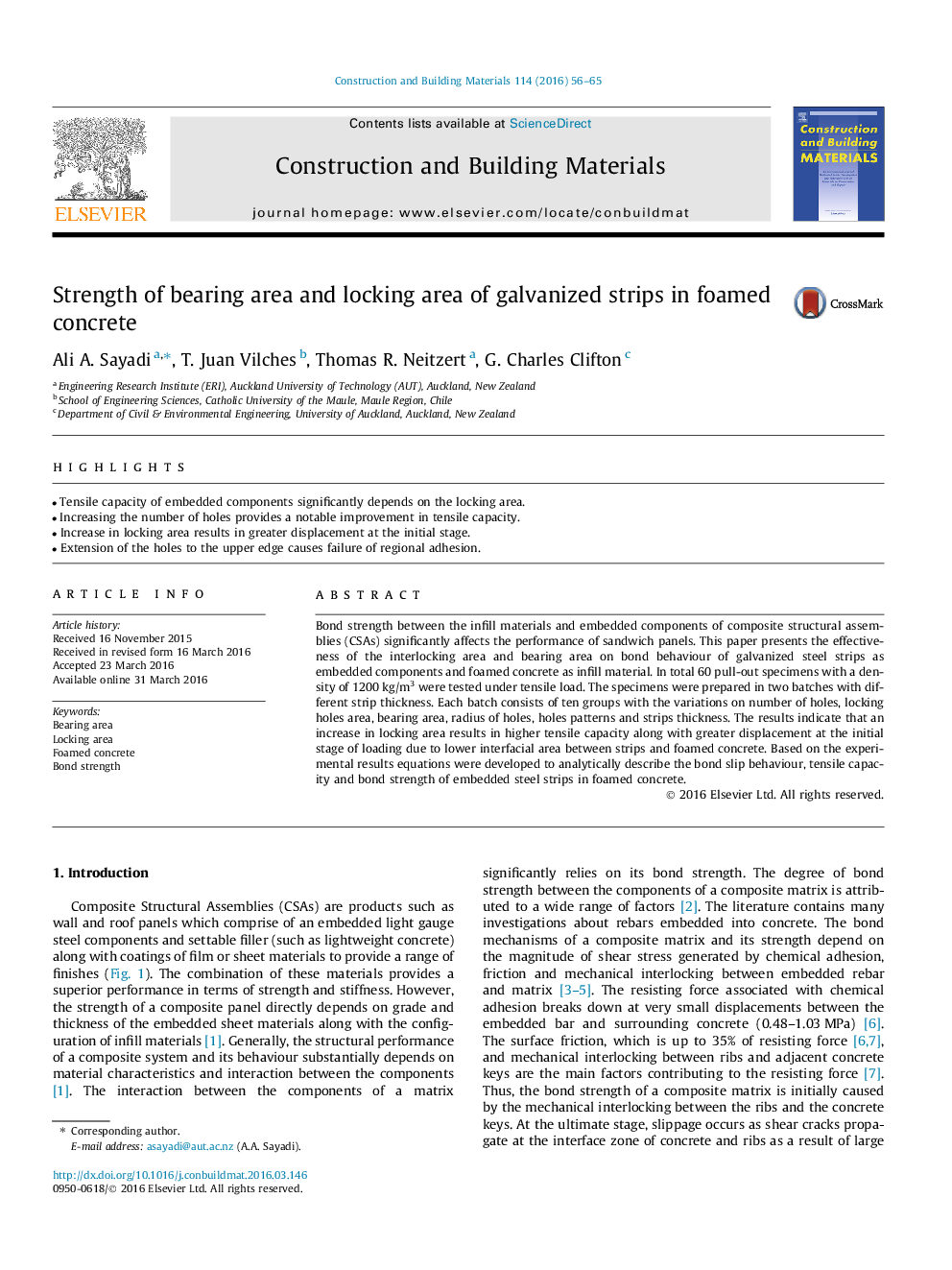| Article ID | Journal | Published Year | Pages | File Type |
|---|---|---|---|---|
| 255960 | Construction and Building Materials | 2016 | 10 Pages |
•Tensile capacity of embedded components significantly depends on the locking area.•Increasing the number of holes provides a notable improvement in tensile capacity.•Increase in locking area results in greater displacement at the initial stage.•Extension of the holes to the upper edge causes failure of regional adhesion.
Bond strength between the infill materials and embedded components of composite structural assemblies (CSAs) significantly affects the performance of sandwich panels. This paper presents the effectiveness of the interlocking area and bearing area on bond behaviour of galvanized steel strips as embedded components and foamed concrete as infill material. In total 60 pull-out specimens with a density of 1200 kg/m3 were tested under tensile load. The specimens were prepared in two batches with different strip thickness. Each batch consists of ten groups with the variations on number of holes, locking holes area, bearing area, radius of holes, holes patterns and strips thickness. The results indicate that an increase in locking area results in higher tensile capacity along with greater displacement at the initial stage of loading due to lower interfacial area between strips and foamed concrete. Based on the experimental results equations were developed to analytically describe the bond slip behaviour, tensile capacity and bond strength of embedded steel strips in foamed concrete.
